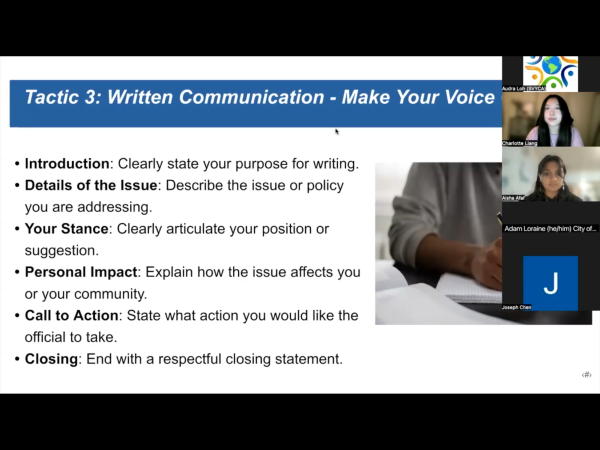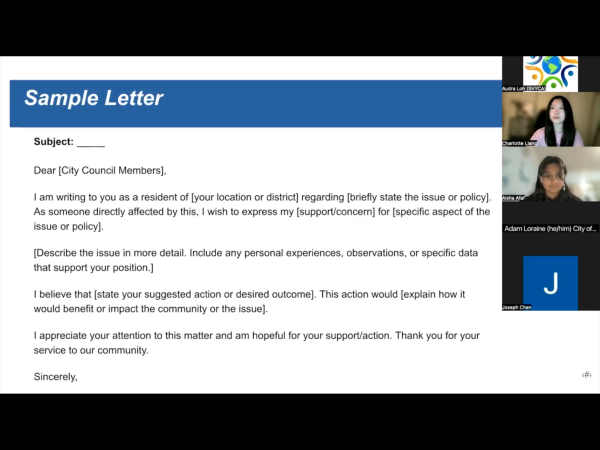Taking action locally can lead to big changes. That was the focus of “Mastering Local Climate Advocacy,” a recent event

hosted by Silicon Valley Youth Climate Action (SVYCA) in collaboration with 350 Silicon Valley. The event helped students learn how to speak up for the environment and become strong climate advocates in their communities.
SVYCA is a youth-led organization with members across the Bay Area, including students from Mills. SVYCA gives students opportunities to fight climate change through education, leadership, and policy. At the event, attendees learned how to prepare public comments, write effective letters, and make their voices heard by local city councils and commissions.
Two Mills High School students, Aisha Afaf (11) and Charlotte Liang (11), were invited to speak at the event alongside San Mateo Deputy Mayor Adam Loraine, energy consultant Joseph Chen, and other community leaders.
Liang, who serves as SVYCA’s Education Officer, explained that her part of the presentation was about giving people the tools to speak up.
“My part focused on why local action is so powerful, plus tips for giving a public comment, how to prepare one, how to write letters and sign-on letters, and really make our voices heard with city councils and commissions,” Liang said.
Although technical issues reduced the live audience, she said the smaller group stayed engaged and motivated.

“What stood out was how much people truly cared,” she said. “Seeing both adults and youth leaning in and asking questions gave me so much hope. It reminded me how powerful community can be when people come together for climate action.”
Aisha Afaf, who has been involved in advocacy work since middle school, brought her own perspective to the event. She spoke about the importance of youth voices in climate action.
“During the event I spoke on the importance of local advocacy and how people should always advocate and speak for their needs,” she said. “When I heard of this opportunity I was really excited to combine my passion for both advocacy and public speaking and teach people about something I love.”
She added that she especially enjoyed the audience’s curiosity.
“I really loved the interactions between the speakers and the audience as we had a lot of people ask questions and be readily involved,” Afaf said.
The event also highlighted why local climate action is so important. Unlike national projects, local initiatives can often be completed in one to two years, creating clearer results more quickly and inspiring others to join in.
Both students agreed that youth leadership has the power to drive real change. Events like these show that even small, local actions can spread widely and make a lasting difference in the fight against climate change. With events like this, students are showing that the next generation is ready to lead the way toward a more sustainable future.